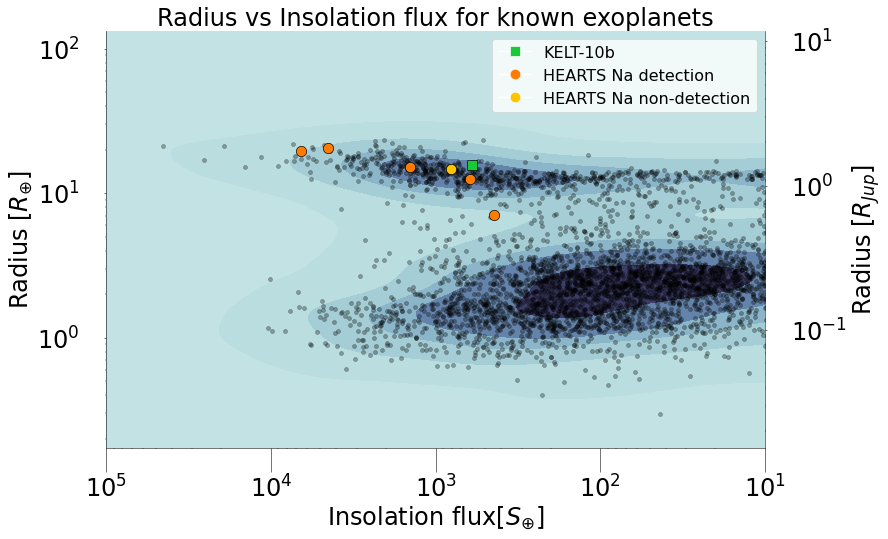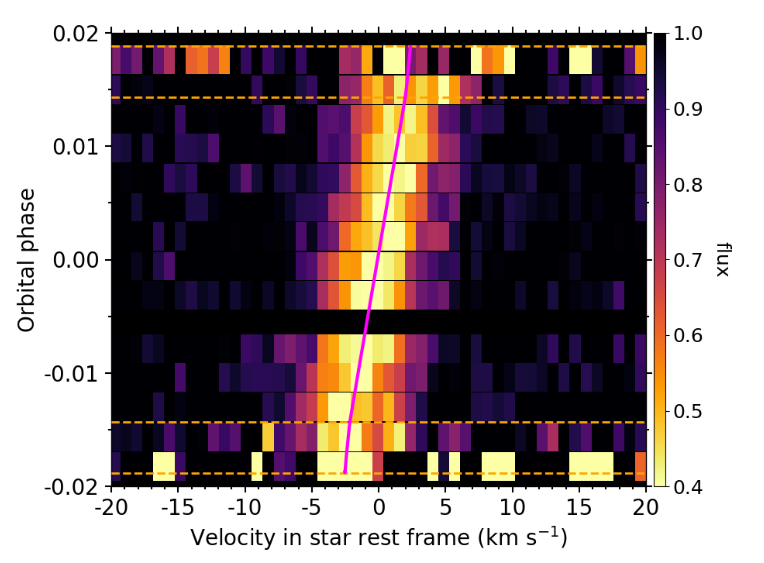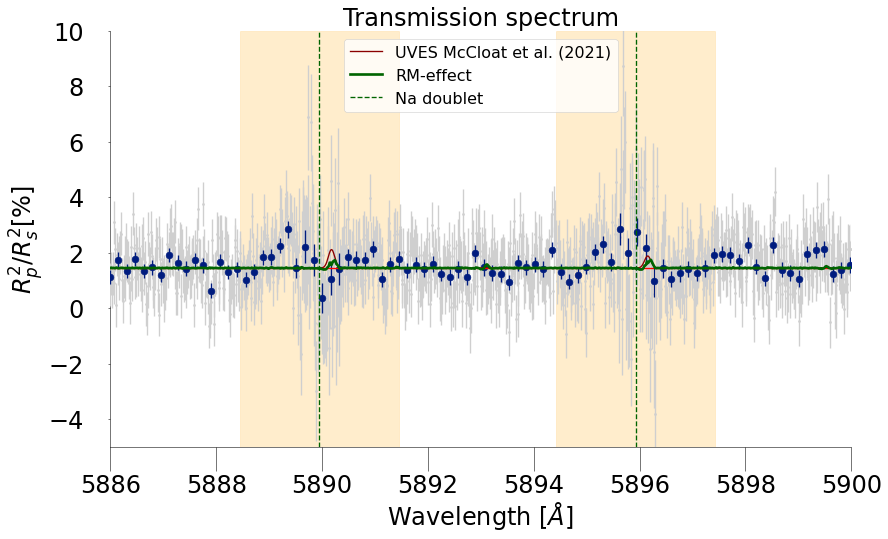Transmission spectroscopy of the aligned hot Jupiter KELT-10b using HARPS
- University of Geneva, Observatory of Geneva, Department of Astronomy, Switzerland (michal.steiner@unige.ch)
Context
High-resolution spectrographs provide an excellent opportunity for probing exoplanetary atmospheres, utilizing the transmission spectroscopy method (among others). This method allows us to explore deep into the atmosphere, detecting multiple atomic and molecular species. We can also study the atmospheric wind patterns by characterizing the line profile. So far, dozens of exoplanets, mainly hot Jupiters and warm Neptunes, have their atmosphere successfully observed with this method. Most studies so far have focussed on exoplanets showcasing easily detectable signatures (in particular, sodium); however, it is important, not to bias the sample of studied planets, to enquire about more challenging cases, which could feature different atmospheric conditions.

KELT-10b
Using the HARPS spectrograph, I will show my work on transmission spectroscopy of KELT-10b, a standard hot Jupiter-type planet, utilizing data from two transit nights. We used spectra from the HEARTS survey, which aims to study exoplanetary atmospheres using transmission spectroscopy with HARPS. I have been mainly focusing on the sodium lines and Balmer lines in the transmission spectrum of KELT-10b. Sodium has not been detected in KELT-10b with HARPS, although recently detected by UVES. I will discuss how high-quality non-detections can further strengthen our confidence in detected signals and how precise rectification of stellar effects is necessary for detections. Two photometric light curves have been observed complementary to the two transit night observations with HARPS. This allows us to monitor the star for potential stellar variation, and, by including the already public dataset, improve the ephemeris of this system.
Rossiter-McLaughlin effect
Since HARPS allows for precise observations of radial velocities, we analyzed the Rossiter-McLaughlin effect during the transits. We measured the obliquity and stellar projected equatorial velocity, finding the system to be aligned.

Transmission spectroscopy
Searching for sodium in the transmission spectroscopy has been unsuccessful, as KELT-10b is quite a faint target. However, due to the characteristics of the system, the effect of the Rossiter-McLaughlin effect is significant, possibly explaining the signature previously detected in UVES data.

How to cite: Steiner, M., Attia, O., Ehrenreich, D., and Bourrier, V.: Transmission spectroscopy of the aligned hot Jupiter KELT-10b using HARPS, Europlanet Science Congress 2022, Granada, Spain, 18–23 Sep 2022, EPSC2022-411, https://doi.org/10.5194/epsc2022-411, 2022.

